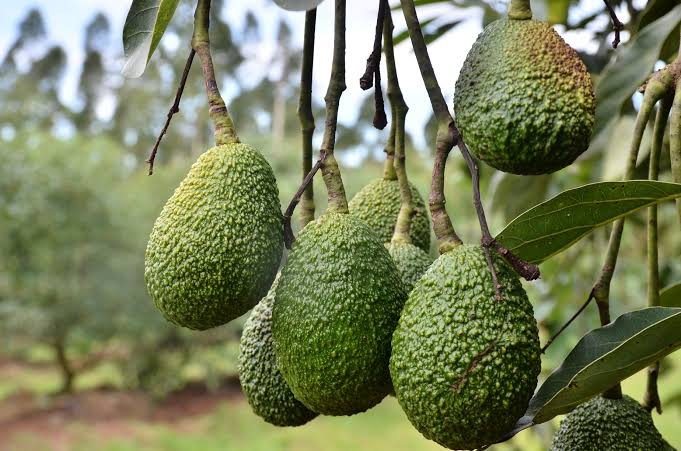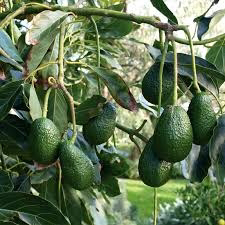Hass Avocado Farming in Uganda
History of Avocado Farming in Uganda
Avocados are evergreen trees that thrive best in subtropical and tropical regions. The fruit is also one of the most cultivated species in the world and is native to Mexico and South America. The fruit was introduced to other parts of the world in the 18th -19th century. The scientific name of Avocados is Persea Americana L.
Avocados were introduced in Eadr Africs by the Portuguese during the 18th century. By 1939, improved varieties such as the Lula, Nabal, Puebla, and Linda had already been introduced.
In Uganda, avocados are grown for the local market, but varieties such as the Hass are produced for export. The fruit contains minerals such as vitamins A, B1, B2, C, and D. The first commercial Avocado orchard in East Africa was set up in 1923 by the Anderson family in present-day Kitale, Kenya. Currently, the family grows the fruit on a 200-acre land around Mt Elgon.
Avocado Farming in Present Times
As of June 2020, Ugandaa has exported more than 28 million kilograms of Avocados to countries such as Egypt, Saudi Arabia, Russia, Hong Kong, Qatar, Morocco, South Africa, and the European Union.
Avocado farming in Uganda had steadily increased since 2015, when the acreage was 13,305 Ha. This later increased to 20,000 Ha by the year 2024.
Hass avocados are mainly grown in Western, Buganda and Eastern regions. The entire Buganda region can facilitate Avocado growth because of its climatic conditions.
Avocado Climate Requirements
Avocados grow best in tropical regions and areas with an altitude of 1500 -2100 meters. Farmers should avoid planting avocados in areas affected by frost because they have low frost tolerance. Varieties such as the Simmonds, Booth 7, and 8 are ideal for growing in hot and humid areas.
Temperature and Rainfall
West Indian avocado varieties, such as the Hass variety, thrive best at 25 – 28 degrees Celsius. In addition, the preferred rainfall should be at least 1000 mm and spread throughout the growing season. Avocado farmers in Kenya are encouraged to use irrigation techniques for optimal yields.
Where irrigation is preferred, water should not be more than 50mm at any time. In addition, it should be regularly applied to avoid water stress.
The best soils for avocado farming should be free-draining soils with a pH of 5.5 – 6.5. Water-logged soil should be avoided because they create a perfect atmosphere for developing fungi such as root-rot disease.
Agronomy services
If you are a first-time avocado farmer, you need to ensure you work with an expert to increase yields and identify diseases early on in the growth cycle. In addition, only plant avocados after a soil test. Our agronimists are trained to identify various pests and diseases that attack avocadoes.
Avocado Varieties Grown in Uganda
There are different avocado varieties grown in Uganda. The most popular is the Hass variety, which is preferred for its profitability, especially in the export market. Hass Avocados mature in 8 -9 months after blossoming. During the early stages of the fruit, Hass is green in color but gradually turns brown as it develops. It has thin and leathery skin with a pear shape,
Other avocado varieties grown in Uganda include:
Fuerte
The Fuerte variety is a crossbreed between Guatemalan and Mexican species. Each fruit weighs around 140 -395 grams when mature. It has a pear shape with a medium seed. One thing farmers need to note about this variety is that it is susceptible to diseases such as Scub and Anthracnose.
Fuerte avocados have smooth green skin, and unlike the Hass variety, Fuerte does not change color when it matures.
Puebla Avocados
Puebla avocados mature in 5 -7 months and have a deep maroon-purple color, a roundish shape, and a smooth glossy feel. The seed is medium-sized with a conical shape. The Puebla variety is sold locally, and the seedlings are used as a rootstock. In addition, they have a nutty aroma with a rich butter taste.
Nabal Avocados
This Guatemalan variety matures in 8-9 months after blossoming. Nabla varieties should be planted at intervals of 8M by 8 M. When mature, it has green/yellow flesh, and the tree always grows upright.
Pinkerton Variety
This fruit variety is known for its long pear-shaped size and dark/pale green color. The recommended spacing for this variety is 6m by 6m.
The two most important commercial fruit varieties are Hass and Fuerte. This is sold in the export market, while Fuerte is sold in the local market.
Hass Avocado Farming in Uganda
Hass Avocado can be distinguished by its large round seed and purplish brown color when ripe. Other varieties are usually green in color, even when ripe. Hass also has a buttery and creamy texture with a sweet taste.
There are specific reasons why the Hass variety is considered the king of all avocados in the world. These are:
- It is preferred for its culinary uses
- It has more fat than other varieties making it smoother and creamier
- Hass avocados have longer shelf life making it easier to ship for long distances
- Has good cooking qualities
Benefits of Hass Avocado Farming
One of the main benefits of Hass avocado farming to farmers is its lucrative returns in the export market. It has a big demand in countries such as the United Kingdom, the Netherlands, and Egypt. It is estimated that in 2023, the largest importers of Hass avocados in Europe will be Kenyan farmers.
The wholesale prices of Hass fruits are also lucrative when compared to the Fuerte variety,
Another advantage of planting this variety is that it requires little space with the recommended spacing of 5 by 5 meters. Compare this to other types that need a spacing of 8 by 8 meters, like the Nabal seed variety. Therefore, Hass can be planted by small-scale farmers. .
Hass Avocado Ecology
It would be best to plant Hass avocados in regions with an altitude of 1000 – 2000m. Rainfall should be evenly distributed throughout the year, with a minimum rainfall of 1,000 mm -1600mm. Hass avocados should be irrigated during the dry season for optimal yields. Farmers should plant this avocado variety in well-drained soil with a pH of 5 – 7.
.Regions where Hass avocados do well include:
- Buganda region
- Busoga region
- Elgon region
- Rwenzori region
- Kigezi region
- Ankole region
- West Nile
When planted in areas most parts of Northern region, they should be irrigated.
How to Plant Hass Avocados in Uganda
Before planting these avocados, ensure that the soil is well-fertilized. Farmers are encouraged to use hybrid fertilizer, which increases yield by more than 30%. An excellent example of such a fertilizer is Safi organics. The following steps should be taken when planting Hass avocados:
Ensure the land is plowed up to 30cm deep and the topsoil is separated from the subsoil. After that, add enough organic fertilizer to the soil to replenish the missing nutrients. When using chemical fertilizer, use DAP.
Hass avocados should be grown from grafted seedlings to increase their disease resistance. In addition, grafting makes the trees adaptable to various types of soil.
Planting Holes
Standard Hass spacing is 5 by 5 meters. This means that an acre of land should hold a maximum of 150 Avocado trees. Farmers are advised to dig the spaces straight to make it easier to tend the trees and harvest. The dug holes should be 2 feet deep or 1 meter deep if being planted in regions with poor rainfall levels.
Mulching and Pruning
Mulching should be done using organic materials to reduce evaporation and high root temperatures affecting growth. In addition, mulching helps reduce weeds which directly compete for nutrients and water.
Pruning should be done before the flowering stage and after harvesting. Hass avocado farmers should also practice thinning to reduce competition for nutrients. Instead of many low-quality fruits, thinning will guarantee fewer quality fruits with a marketable weight and size.
At Bwebajja Fruit Tree Nursery, we provide advisory services on the set up of Hass Aviation orchards and other agrochemist services. If you are interested in our services contact us on +256708729144 or info@bwebajjafruittree.com.







Comments
Post a Comment